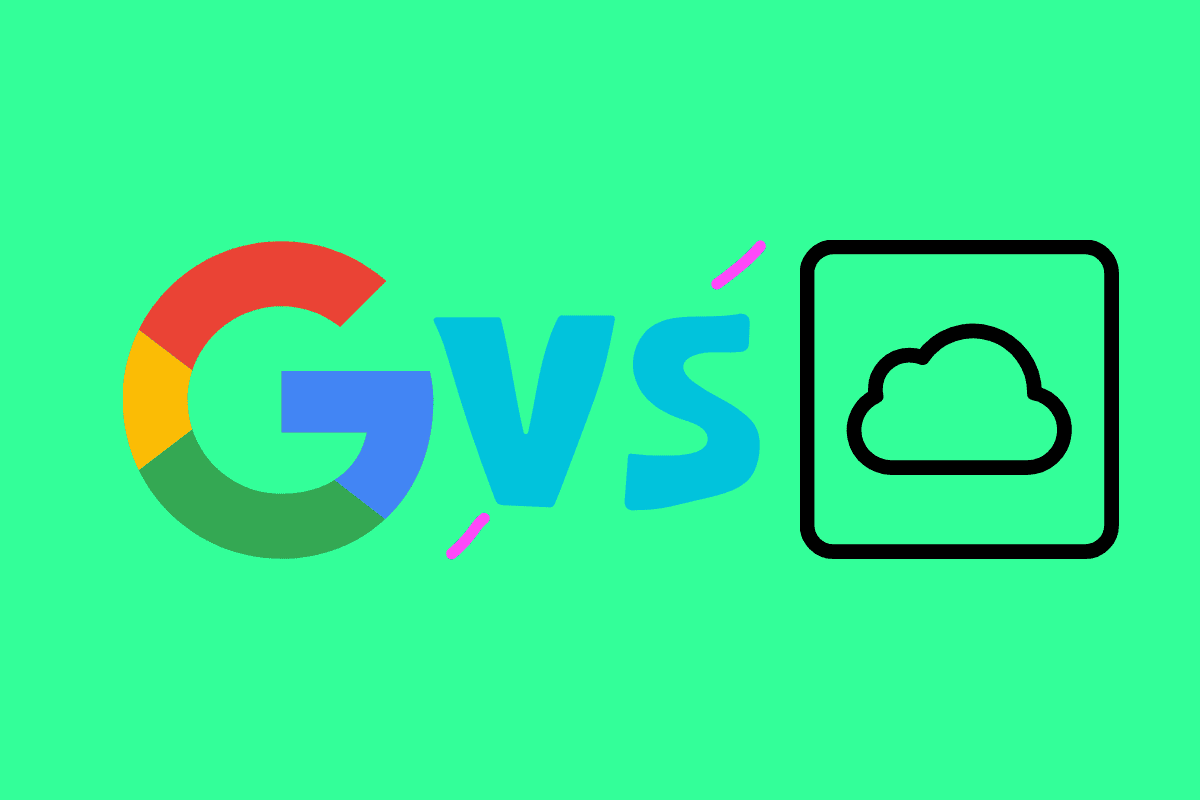Google Photos is an excellent photo storage and organising platform but is it worth switching to from iCloud? Let’s compare the features.
You’ve probably heard by now how fantastic Google Photos is. If you haven’t used it yourself, there’s no doubt somebody else hasn’t mentioned it to you by now.
It can accurately recognise people, animals, objects, and places in your pictures. It can even automatically produce GIFs and videos from the images in your collection.
In contrast, iCloud is Apple’s free online data storage service that consumers may utilise to protect their data from loss and free up space on their iPhone and other Apple devices.

To avoid needing to keep your data locally on your device or on an external hard drive, you use a web-based storage option when you store data “in the cloud.” Both of the aforementioned applications do this, however iCloud only supports material from Apple devices.
Google Photos can be used by anybody though – as long as they have a Google account. But is it worth doing so if you use Apple products? Let’s compare the features.
Google Photos Features
We’ve briefly covered some of the main features and benefits of Google Photos in the intro, but let’s go into it in a bit more detail and cover a few more advantages the software can offer.
Free Up Space On your Device
One may swiftly free up storage space in Google Photos by making use of the storage management feature that is included in the app.
With the help of this application, you’ll be able to get rid of fuzzy images, screenshots, lengthy films, and other photos that you don’t really want to save.
You will be able to access this storage management option by going to Account Settings in Google Photos, clicking on Back up and Sync settings, and then selecting Manage Storage from the drop-down menu.
Store All Your Memories In One Place
Physical photo albums still have their place, but they’re certainly becoming a little outdated owing to the fact that our lives have moved online.
If you use a smartphone, a camera, a computer, a tablet and whatever else, Google Photos allows you to store all of your media in one place – creating one big online media album that you don’t have to dust off to look at once a year.
Create Collages & Movies
Users of the Google Photos app may use their photos to make movies or collages. This function may be accessed via the mobile version’s Library section.
Here, you must choose the “Utilities” tab and then scroll all the way to the bottom. An option for “Movie and Collage” will now appear.
Additionally, you may ask Google to make videos, and it just takes a few seconds to do so. Even music is added by the programme to the material that it produces for you.
And don’t worry, Google has confirmed that the app will not delete the original photos you used to create the movie if you delete the movie or any collage you created with Google Photos.
Hide Your Media
There may be instances in which you do not want a certain person to see certain images on the application, in which case you may hide such photos.
Simply go to the Library menu, then choose Utilities, and then click the “Move images to Archive” option.
After you choose this option inside the Google Photos app, you will be able to conceal photographs that you do not want other people to see.
Restore Deleted Content
If you have recently deleted photographs or videos from Google Photos, you may retrieve them by going to the Trash area and selecting the appropriate item.
On your mobile device, you just need to launch the application and go to the Library area, where you will see a section labelled Trash. Simply click on it, and you will be able to see all of the photographs that you have previously erased.
If a picture or video that you destroyed isn’t in the trash, then you won’t be able to get it back even if you try.
Note that if you relocated the content to trash more than 60 days ago, permanently deleted it from your junk, or permanently deleted it from the Gallery app on your device without first backing it up, then you will not be able to reclaim it. This restriction applies even if you deleted it from your trash or from the Gallery app on your device.
iCloud Features
While iCloud does allow you to free up space on your devices and store your media on the cloud, the main features the service has are a little different to that of Google Photos.
Here are some of the main features of iCloud:
Custom Email Address
When you sign up for an iCloud account, Apple gives you a unique email address that may utilise domains like @mac.com @icloud.com or @me.com.
If you want your email address to utilise a custom domain, you have the option of purchasing email hosting and assigning a domain. Apple’s iCloud+ service enables you to accomplish both of these things as part of your subscription.
If you already have a custom domain, you may use it with your family group to give each member of your family their own unique email address. If you do not already have a custom domain, you can purchase one.
Hide Spam Emails
You may create arbitrary email addresses with “Hide My Email” that forward to your iCloud email account. It’s always irritating to be spammed by companies that have forced you to enter your email address at sign up, but with iCloud that’s no longer an issue.
On some websites, you may establish addresses for one-time use, and they are redirected to your iCloud address. If you get spam, you may stop it at the source by turning them off at any moment.
“Private Relay”
Your IP address, which may be used to identify your device and build a profile of you and your activities, is concealed via iCloud Private Relay.
By employing two proxies – internet servers that translate your IP address – it does this. Neither of these proxies is aware of both your IP address and the website your device is now browsing.
Although iCloud Private Relay contains some of the functionality present in most VPNs but is far more constrained, it is not a VPN.
A VPN secures traffic on all applications and services on your device, while iCloud Private Relay only works with Safari, DNS requests, and a few other apps.
UPDATE: Apple now lets you end-to-end encrypt iCloud data with Advanced Data Protection.


